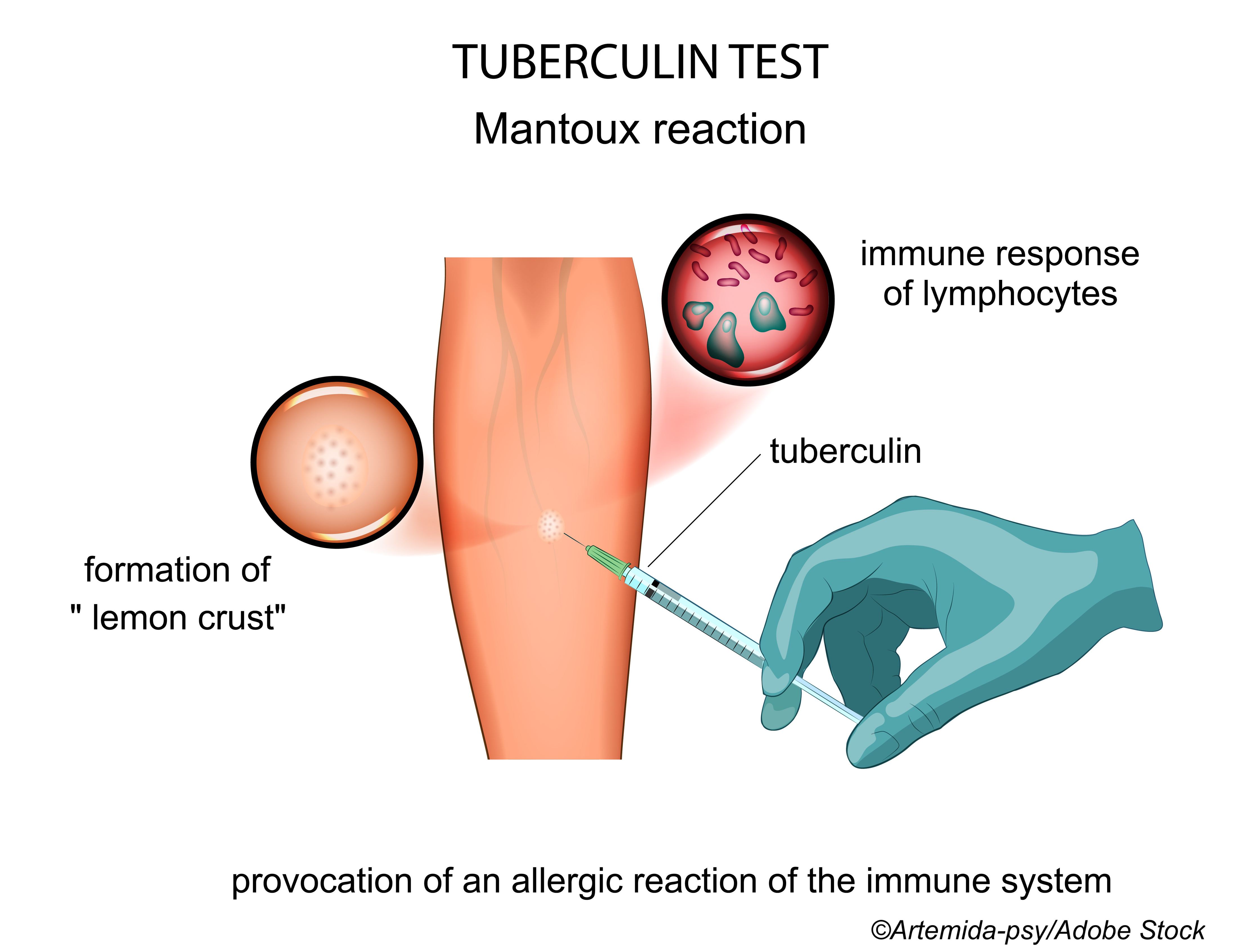More patients were tested for tuberculosis (TB), diagnosed, and treated for confirmed infection in a timely manner when health care centers used a diagnostic strategy that incorporated on-site molecular testing plus strategies that helped overcome barriers to delivering high-quality evaluation services, according to results from the XPEL-TB trial, published in The New England Journal of Medicine.
Adithya Cattamanchi, MD, of the Division of Pulmonary and Critical Care Medicine and the Center for Tuberculosis, San Francisco General Hospital, and colleagues, outlined the current problems with TB testing, which include the suboptimal sensitivity and technician skill dependent nature of sputum-smear microscopy, which in the end, identifies only about 50% of patients with TB.
To combat this, molecular assays are being developed, like the Xpert MTB/RIF assay, a semiautomated molecular assay conducted on the GeneXpert platform. This new assay is capable of identifying 85% of TB cases in adults within two hours. It also requires minimal training, but it has high costs and infrastructure requirements.
The GeneXpert Edge and Truelab are other examples of the newer generation of molecular diagnostics that are geared for deployment at community health centers. GeneXpert Edge is a compact version of the GeneXpert platform, boasting lower power requirements and portable molecular testing platforms; and Truelab is a portable molecular testing platform.
“Although newer molecular diagnostic platforms help to address certain barriers to diagnosis (e.g., accuracy and speed of testing), some new technologies often do not produce the intended results because of contextual factors in the broader health system that influence their implementation. Such factors are of particular concern where health systems are weak, as is often the case in countries with a high prevalence of tuberculosis,” wrote Cattamanchi and fellow researchers.
To learn more, they conducted the XPEL-TB study, in which they sought to evaluate on-site molecular testing plus restructured work flows and feedback to address health center level barriers to providing TB evaluation services.
In this cluster-randomized trial, these researchers randomized 20 Ugandan community health centers to either a multicomponent diagnostic strategy (n=10) or routine care (n=10). The multicomponent diagnostic strategy was comprised of on-site molecular testing for TB, guided restructuring of clinic workflows, and monthly quality metrics feedback, while routine care consisted of on-site sputum-smear microscopy and referral-based molecular testing.
The primary outcome of the study was the number of adults treated for confirmed TB within 14 days after presentation for evaluation, and secondary outcomes included completed TB testing, same-day diagnosis, and same-day treatment.
Data from 10,644 adults (median age: 40 years; 60.1% women; 43.8% HIV infected) were evaluated. As a result of the intervention strategy, more patients were treated for confirmed TB within 14 days of presentation. In the intervention health centers, this occurred in 342 patients, versus in 220 in the control health centers (adjusted rate ratio [ARR]: 1.56; 95% CI: 1.21-2.01).
In addition, more patients at the intervention health centers underwent the following compared with those in the control centers:
- Completed TB testing (ARR: 1.85; 95% CI: 1.21-2.82).
- Same-day diagnosis (ARR: 1.89; 95% CI: 1.39-2.56).
- Same-day treatment for confirmed TB (ARR: 2.38; 95% CI: 1.57-3.61).
- Same-day treatment for confirmed or clinical TB (ARR: 1.90; 95% CI: 1.21-2.98).
- Treated within 14 days (ARR: 1.48; 95% CI: 1.04-2.12).
In all, 706 patients had confirmed TB, of whom more were treated on the same day in the intervention group compared with the control group (ARR: 2.29; 95% CI: 1.23-4.25) or within 14 days after presentation (ARR: 1.22; 95% CI: 1.06-1.40).
Outcomes did not differ according to patient gender or HIV infection status. Among men, patients treated for confirmed TB within 14 days of presentation were greater in the intervention group compared with controls (ARR: 1.59; 95% CI: 1.21-2.09), and the same was true in women (ARR: 1.46; 95% CI: 1.03-2.07), those with HIV infection (ARR: 1.78; 95% CI: 1.15-2.77), and those without HIV infection (ARR: 1.46; 95% CI: 0.98-2.18).
“With regard to secondary outcomes at each step of the tuberculosis diagnostic evaluation cascade of care, the proportions were similarly greater in the intervention group than in the control group among both men and women and among both persons with HIV infection and those without HIV infection,” noted the authors.
Cattamanchi summed up the results.
“More sensitive tests done at the point-of-care along with health system interventions to improve the quality of care can lead to more patients being diagnosed with and treated for TB,” he told BreakingMED. “The findings show that donors and programs should invest not just in new technologies but also health system interventions that facilitate their effective uptake. Together, they improve the quality and outcomes of TB diagnostic evaluation.”
But are these new molecular tests for TB readily available, both in the U.S. and in countries with a high incidence of TB, such as Uganda?
“I would say in some ways they are more readily available in Uganda and other high TB burden countries, where there has been a concerted effort at scaling up molecular testing for TB. But we show that to really make a difference they need to be even more accessible at lower-level health centers,” Cattamanchi said.
Study limitations include the changing of the primary outcome assessment—from a basis of proportions of patients, to a basis of counts of patients treated for confirmed TB within 14 days after presentation, the small number of health centers included, and testing for a multicomponent intervention.
Cattamanchi added, “The trial was done in a single country. The healthy system co-interventions tested here (process re-design and performance feedback) may need to be adapted for other settings.”
-
A diagnostic strategy that included on-site molecular testing plus well-supported delivery of TB care and evaluation led to more tested, diagnosed, and treated patients.
-
Newer, more sensitive molecular assays for TB lead the charge towards better TB diagnostics.
Liz Meszaros, Deputy Managing Editor, BreakingMED™
This study was funded by the National Heart, Lung, and Blood Institute.
Cattamanchi had no disclosures.
Cat ID: 190
Topic ID: 79,190,730,190,310,192,195,311,925



